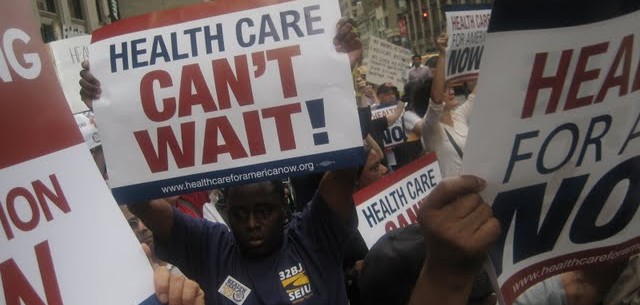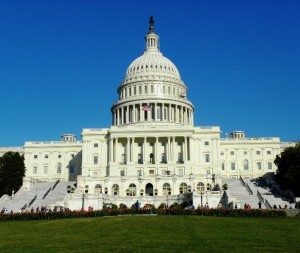Two major health care issues long being pushed by advocates as needing Congressional action are finally moving forward as Congress approaches the coming Easter-Passover recess period, and they are being combined into one major bill. The particular matters concern a) reforming the method and formula by which Medicare pays for physician services, and b) continued funding for the State Child Health Insurance Program (CHIP.)
First up, the CHIP story…
This program was created in 1996 in the wake of the failure of the Clinton administration’s comprehensive health care initiative of 1993-4 (“The Health Security Act”.) It was a bipartisan effort in Congress spearheaded by Senator Ted Kennedy (D-MA) and Sen. Orrin Hatch (R-UT), with support from then First Lady Hillary Rodham Clinton and House Speaker Newt Gingrich (R-GA.) It provides funding to states to provide health insurance for uninsured children in low and moderate income families, either through Medicaid, a special program, or some combination thereof. New York has a mixed/blended program, which was created under the Pataki administration in 1997, building off of a rudimentary children’s health coverage program that had been created by his predecessor Mario Cuomo.
The program came up for reauthorization in 2007 and a 2-year fight ensued to do so, during which then President George W. Bush vetoed it 3 times because he did not support the expansions being promoted by Democratic congressional leaders. Shortly after President Obama took office in 2009, the Children’s Health Insurance Program Reauthorization Act (CHIPRA) was finally enacted, to continue the program for another decade, and it included several improvements to cover more children, cover more benefits, and streamline enrollment. However, actual funding for the full 10 year period was not included. When the Affordable Care Act was enacted a year later in 2010, it provided funding up through 2015, and required states to maintain the CHIP programs they had in place with no cutbacks, despite the impacts of the Great Recession on state budgets.
Overall, CHIP has been a smashing success, and a rare bipartisan-supported program. It covers 8M children nationally, including almost 300,000 here in New York. The uninsured rate for children has dropped dramatically, and is now very low in New York. The coverage is tailored toward the needs of children and adolescents, and is available to all children: at no-cost (via Medicaid) for low-income families; low-cost for working-poor and moderate income families, and full-cost (still quite affordable) for upper-income families. In short, we have universal coverage available for all children in New York.
While CHIP per se is in place legally for still another 4 years, the funding authorized for it ends as of Sept. 30 of this year. Since many states, like New York, are developing and adopting their annual budgets now, action by Congress is needed pretty immediately and cannot wait until the fall, as states need clarity and certainty on the matter in order to plan accordingly. This situation has engendered a “must-do” dynamic in Congress. The current bill in the House (H.R. 2) would provide funding for CHIP as is for another 2 years, essentially punting the whole matter to the next President and Congress who will take office in 2017. Congress says it will pay for this extension by booking additional savings to Medicaid reductions under its new budget proposals that came out last week (…and all of that is the subject of another whole blog post here sometime soon.)
Meanwhile, concerning Medicare payments to doctors,…
Back in 1997 as part of the Balanced Budget Act, Congress attributed budget savings to Medicare under a “Sustainable Growth Rate” (SGR) formula that envisioned gradual reimbursement rate reductions for physicians over time. However, every time since then when one of these cuts were to happen, physicians would threaten to stop taking Medicare claiming they would not be receiving adequate payments, and Medicare patients would clamor for Congress to forego the decreases. As a consequence, for nearly 2 decades now the “SGR problem” has continually resurfaced as a political crisis with piecemeal, temporary patch-ups, and the system as a whole was never implemented. The problem could have been addressed long ago but for how to pay for the cost of foregoing the scheduled reductions, which by now have grown to be quite sizeable in the aggregate. By now, all stakeholders agree that it must be discontinued and a new method to control physician costs in Medicare put in its place.
Again, enter the Affordable Care Act.
While the ACA is most well-known for its insurance coverage provisions, the law itself also contains many provisions that may be described collectively as “delivery system reforms” which, among other things, encompass payment reforms, either explicit or implicit. Since the ACA’s enactment some 5 years ago, the Obama administration has proceeded with slowly implementing these provisions, including policies to move away from currently-nearly-universal piecemeal fee-for-service methods to new “alternative payment methods” (APMs) such as bundled payments, global budgets, payments for episodes of treatment, and payment for value and outcomes. All of these ideas are designed to curtail well-documented financial waste and inefficiency in the U.S. health care system. Just recently, the Centers for Medicare and Medicaid Services (CMS) announced a goal of shifting payment for 50% of Medicare services to these APMs by 2018.
By moving forward with incorporating these APMs into Medicare, Congress has found a way to offset the cost of discarding the SGR scheme. However, it also is booking some savings/offsets in ways that will affect some Medicare beneficiaries directly in 2 ways: upper-income beneficiaries will pay a slightly higher premium for their Part B coverage, and all beneficiaries will have to incur the standard Part B deductible (currently about $148/year) regardless of whether or not they carry a private supplemental “Medigap” policy or are enrolled in a private “Medicare Advantage” plan.
As for what advocates think of all this,… as with any piece of major legislation, it’s a bit of a mixed bag, reflecting political compromise across both sides of the aisle.
On the one hand, the whole “SGR problem” is finally resolved once and for all and goes away. However, this progress comes at the cost of some additional out-of-pocket costs for Medicare beneficiaries, and continued erosion of Medicare’s “universality”, a process that began under the Medicare Modernization Act of 2003 which introduced various “means-testing” measures into the program.
On the other hand, CHIP funding is renewed “cleanly” without any cutbacks whatsoever (despite what appeared in recent CHIP reform proposals from Congressional leaders, and again that’s a subject for another future post here), and including some scheduled increases in funding to states that will go into effect this fall. While the House is proposing to extend CHIP funding for only 2 years and not the 4 years needed to align with the program’s existing legal authorization, Democrats in the Senate are signaling that they will push for a 4-year extension.
A couple of other unrecognized aspects of this bill… one good, one problematic. The bill does continue special ACA funding for 2 years for Federally-Qualified Health Centers (FQHCs), the Teaching Centers Program, and the National Health Service Corps, which provides placement of newly-graduated health care professionals in medically-underserved communities, such as urban centers and rural counties where physicians are scarce. However, it bans FQHCs from using the additional money to pay for abortion services, a provision that has aroused opposition from reproductive rights advocates. Such restrictions have been in place for FQHCs for quite some time now via appropriations bills, but not via statute.
Finally, the politics of it all…
The House bill is expected to pass the bill by the end of this week, but it will likely require more-moderate Republicans joining forces with Democrats to do so, since far-right Republicans are balking at the unpaid-for cost and a straight-forward continuance of CHIP as is. In fact, this “grand compromise” on Medicare SGR and CHIP is the result of behind-the-scenes negotiations between House Speaker John Boehner (R-OH) and Minority Leader Nancy Pelosi (D-CA), a move that has surprised everyone and upset Boehner’s more-right-wing colleagues. The Senate will take up the matter when they return from recess in mid-April.
On the whole, advocates are generally supporting the bill, urging the House to proceed and then turning to the Senate to make improvements. While the bill has problems and shortcomings, many believe that it’s the best deal possible given the circumstances and players involved, and that by removing these matters from the upcoming budget debates of this spring, summer, and fall, they are protecting them against far worse prospects.
(For a full summary and analysis of the bill, here’s a 4-page brief from the Center on Budget and Policy Priorities.)



